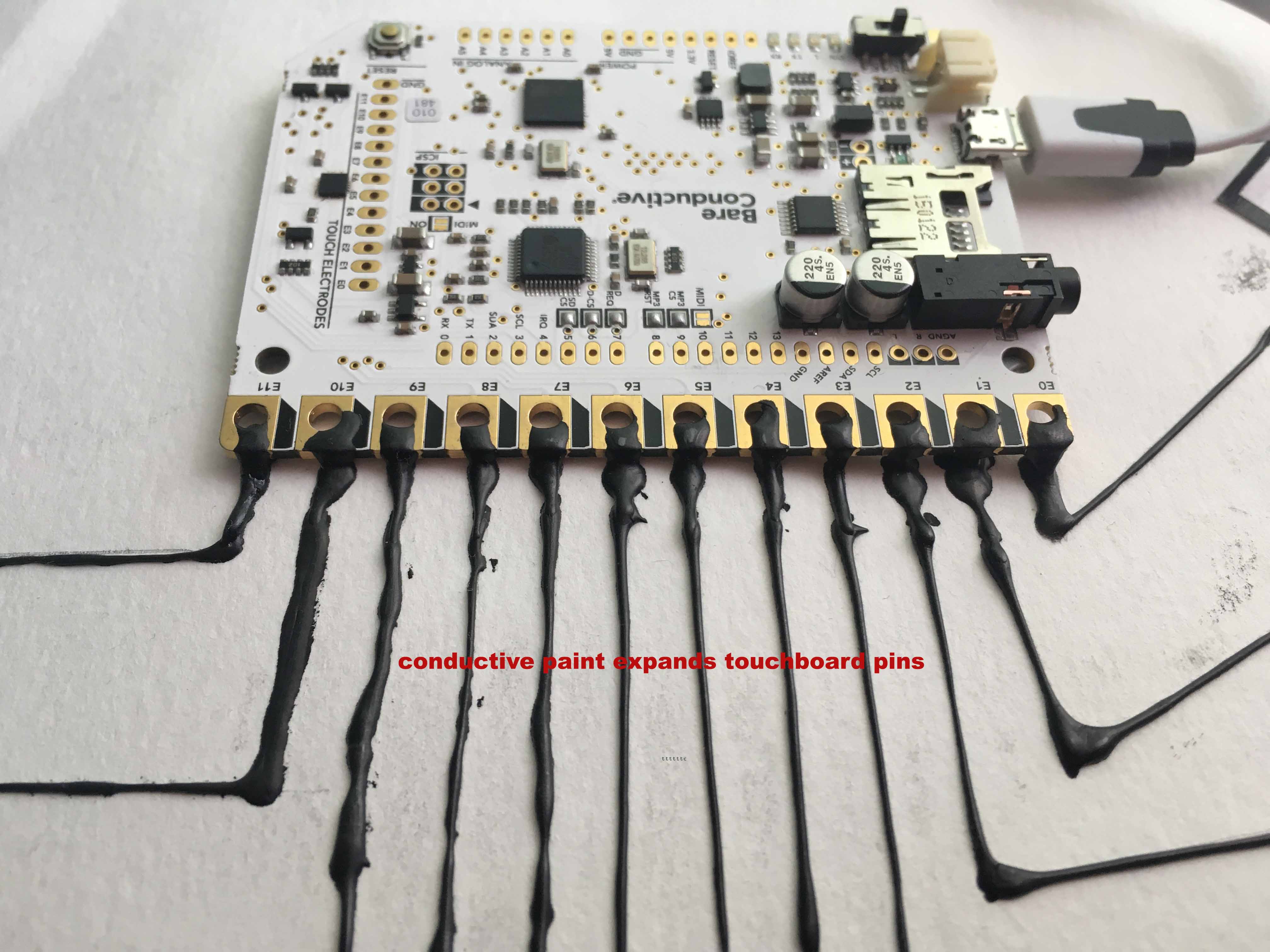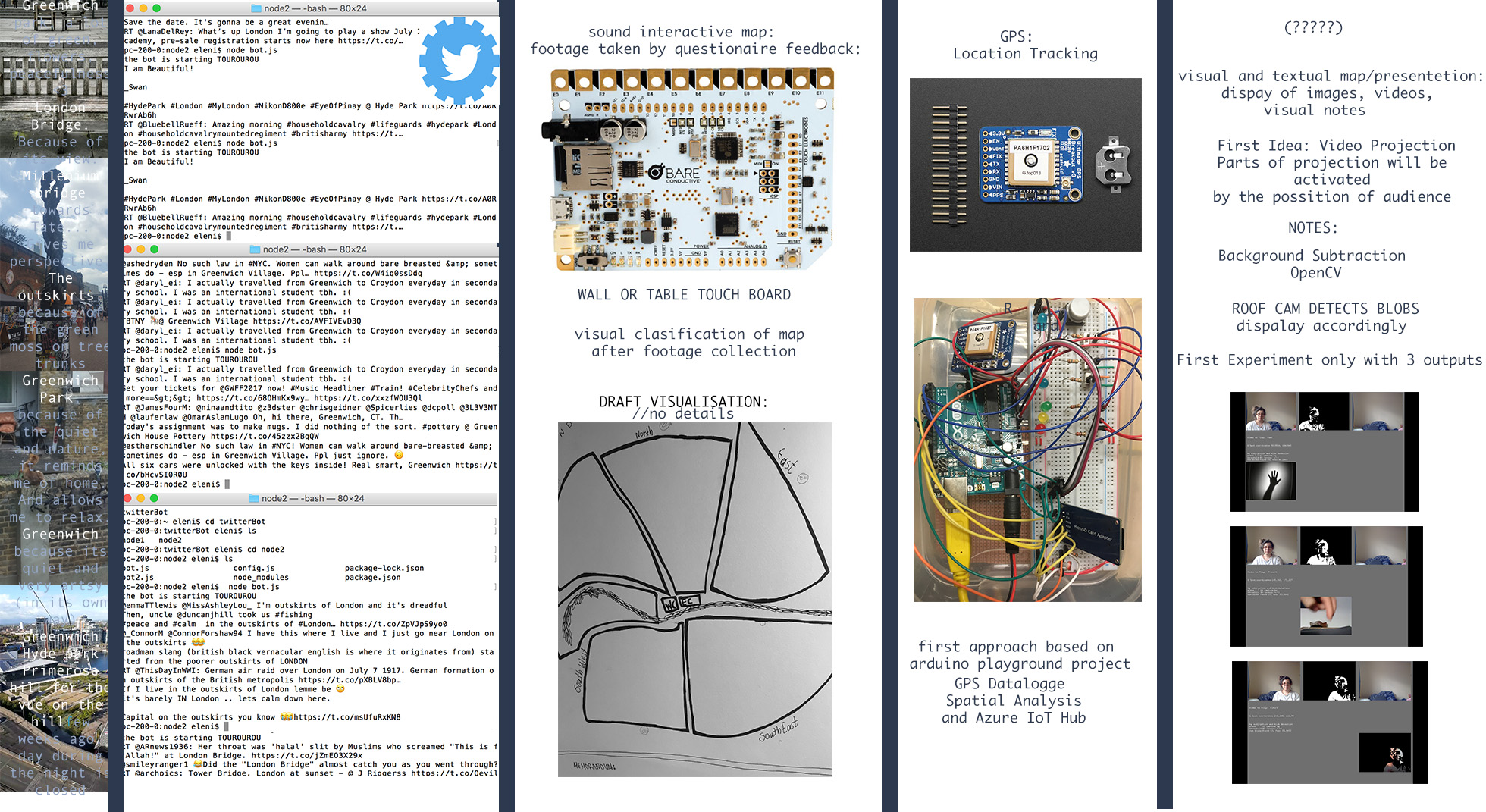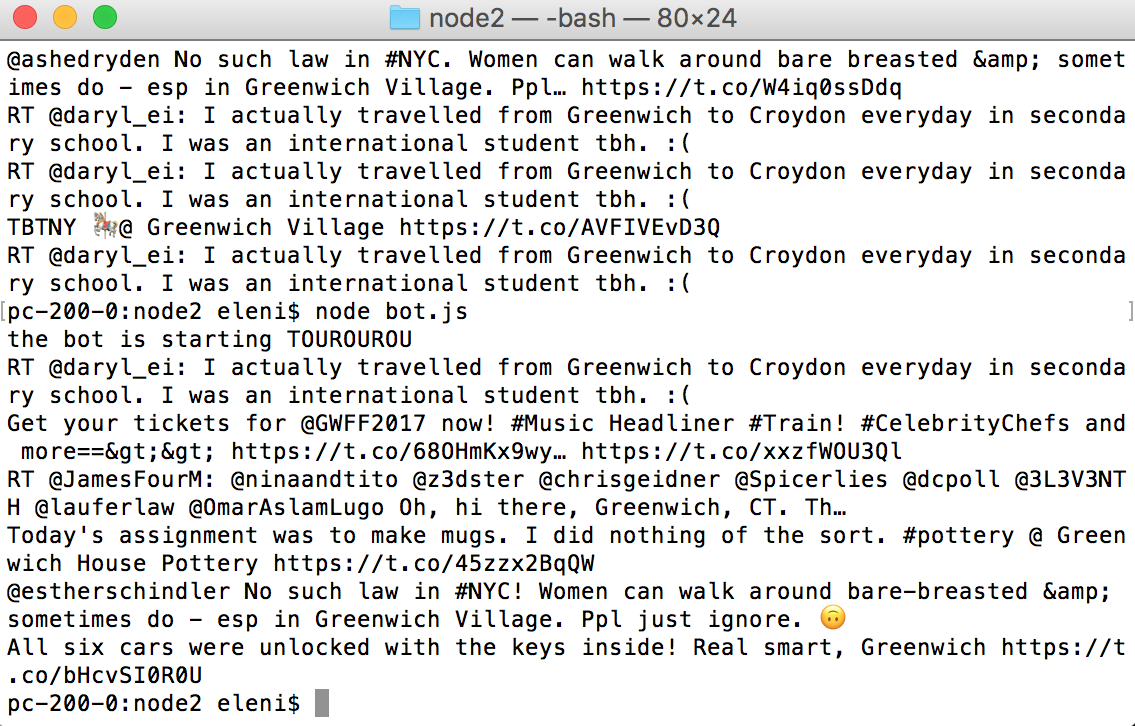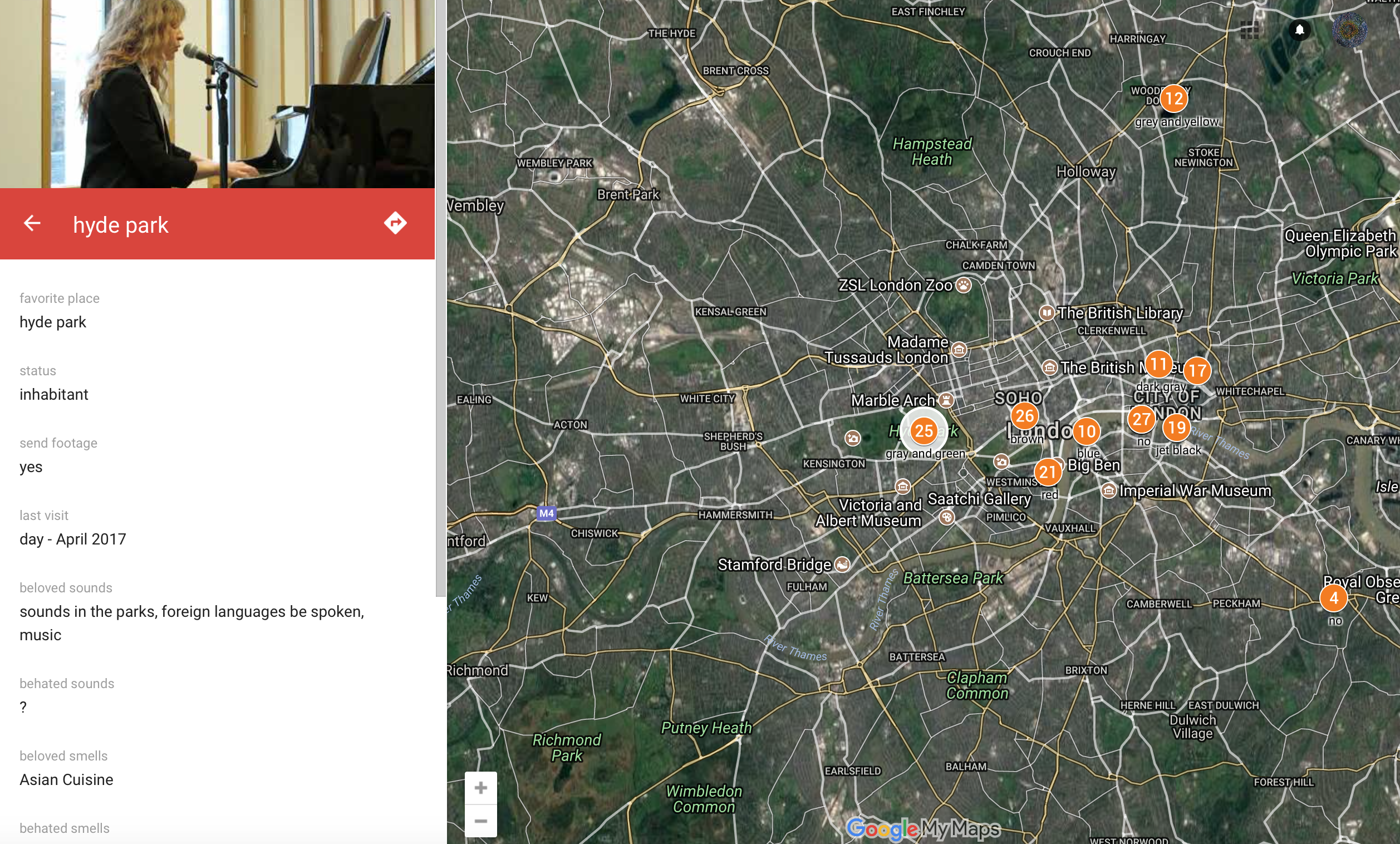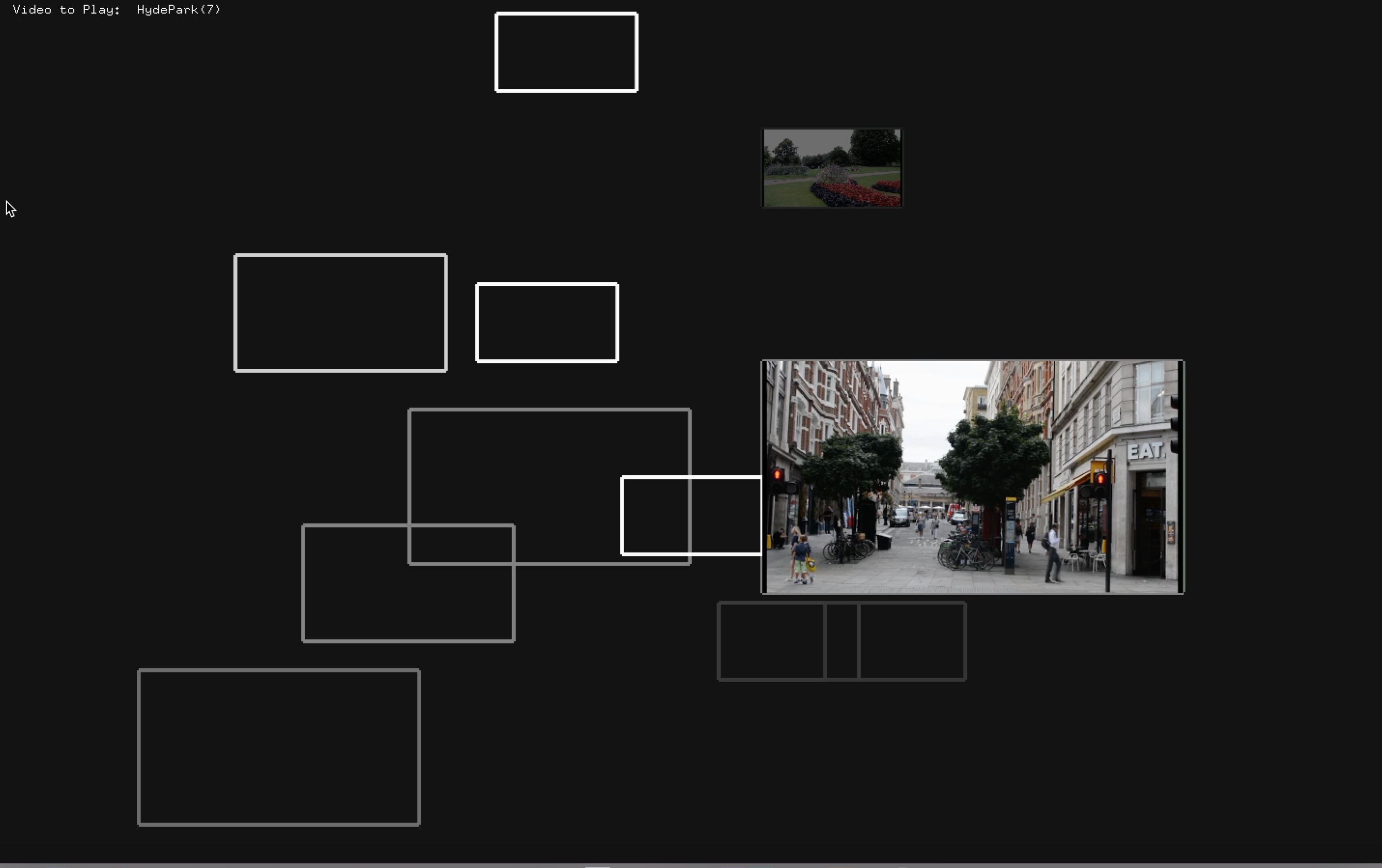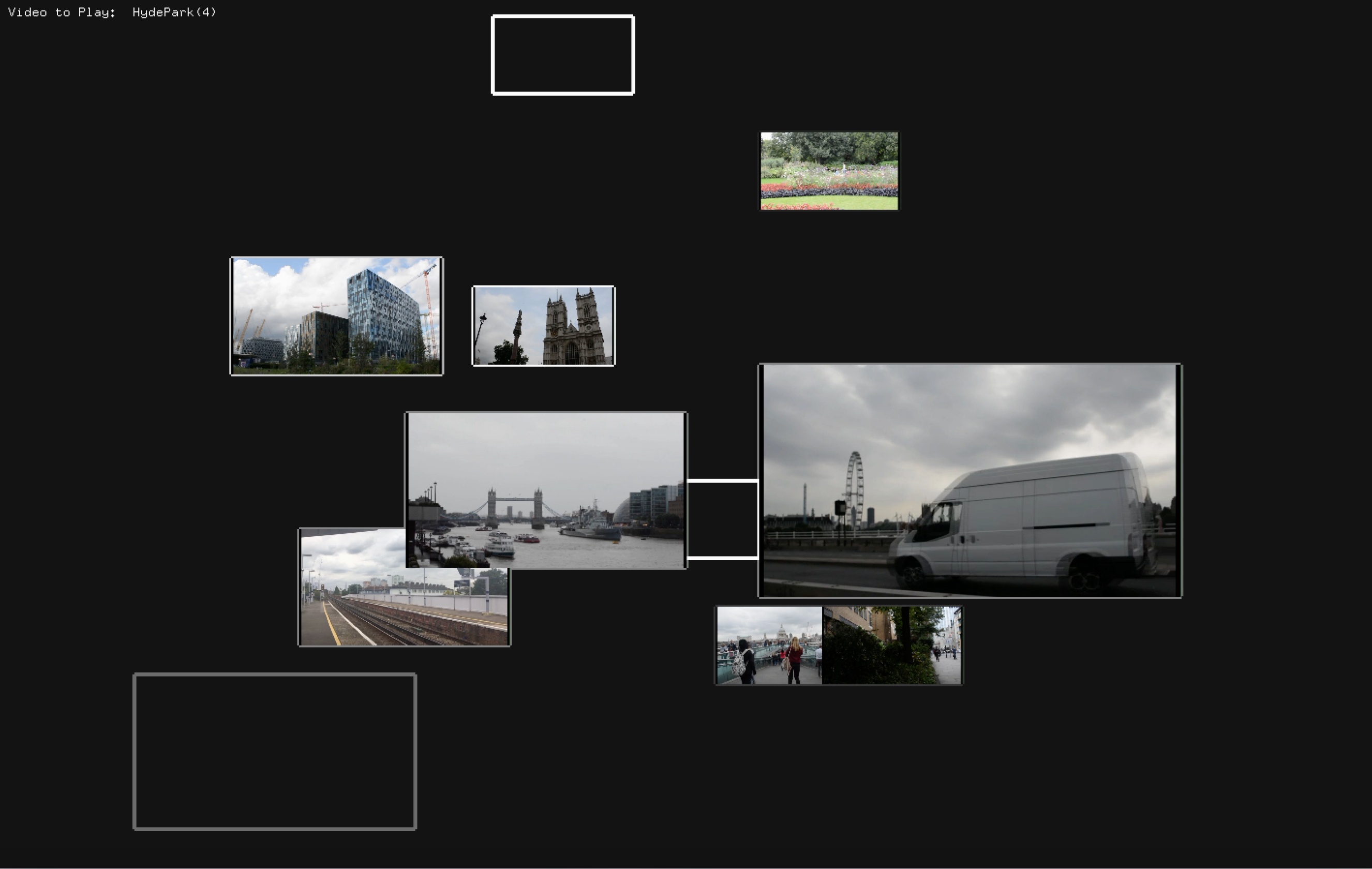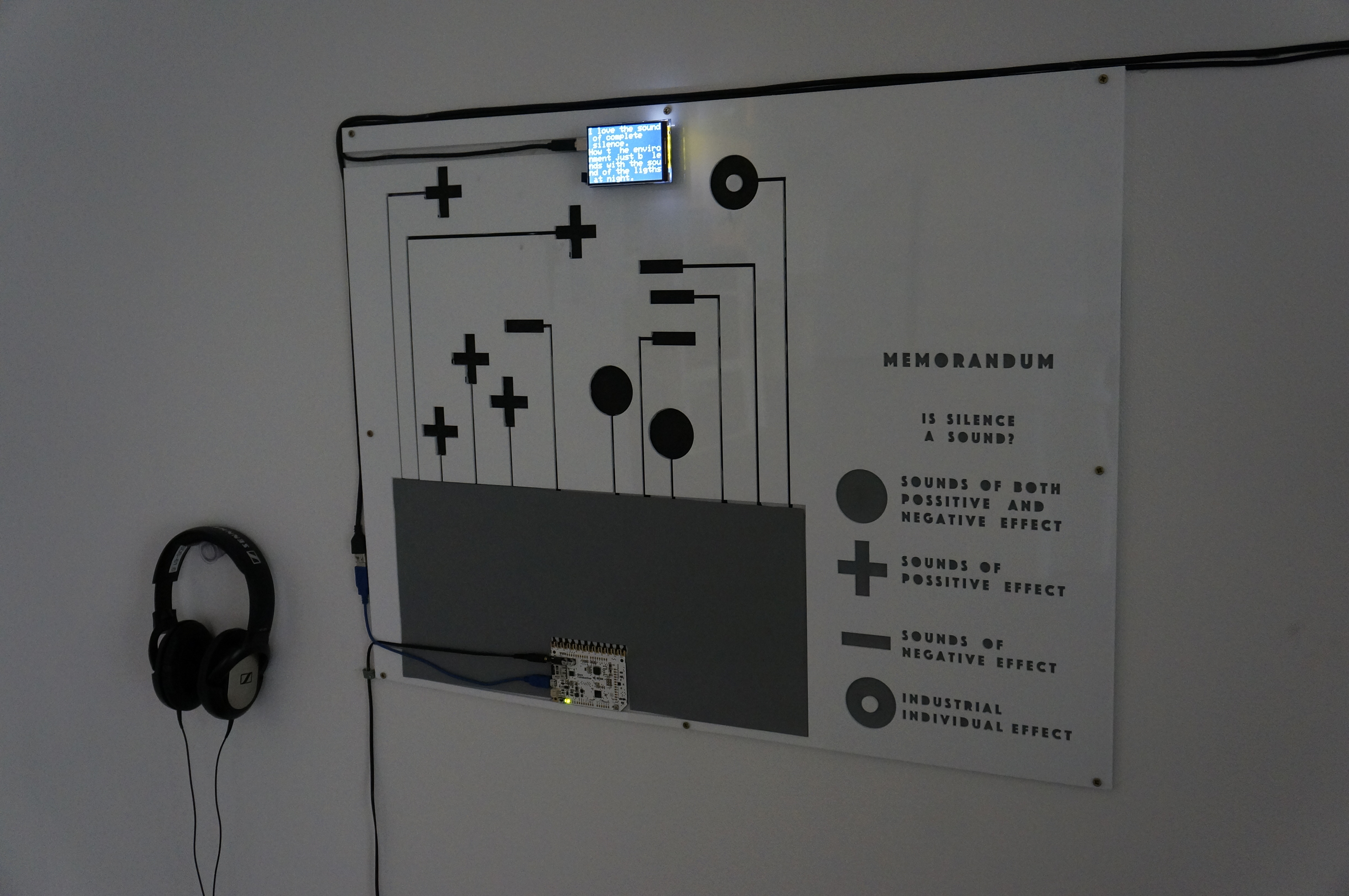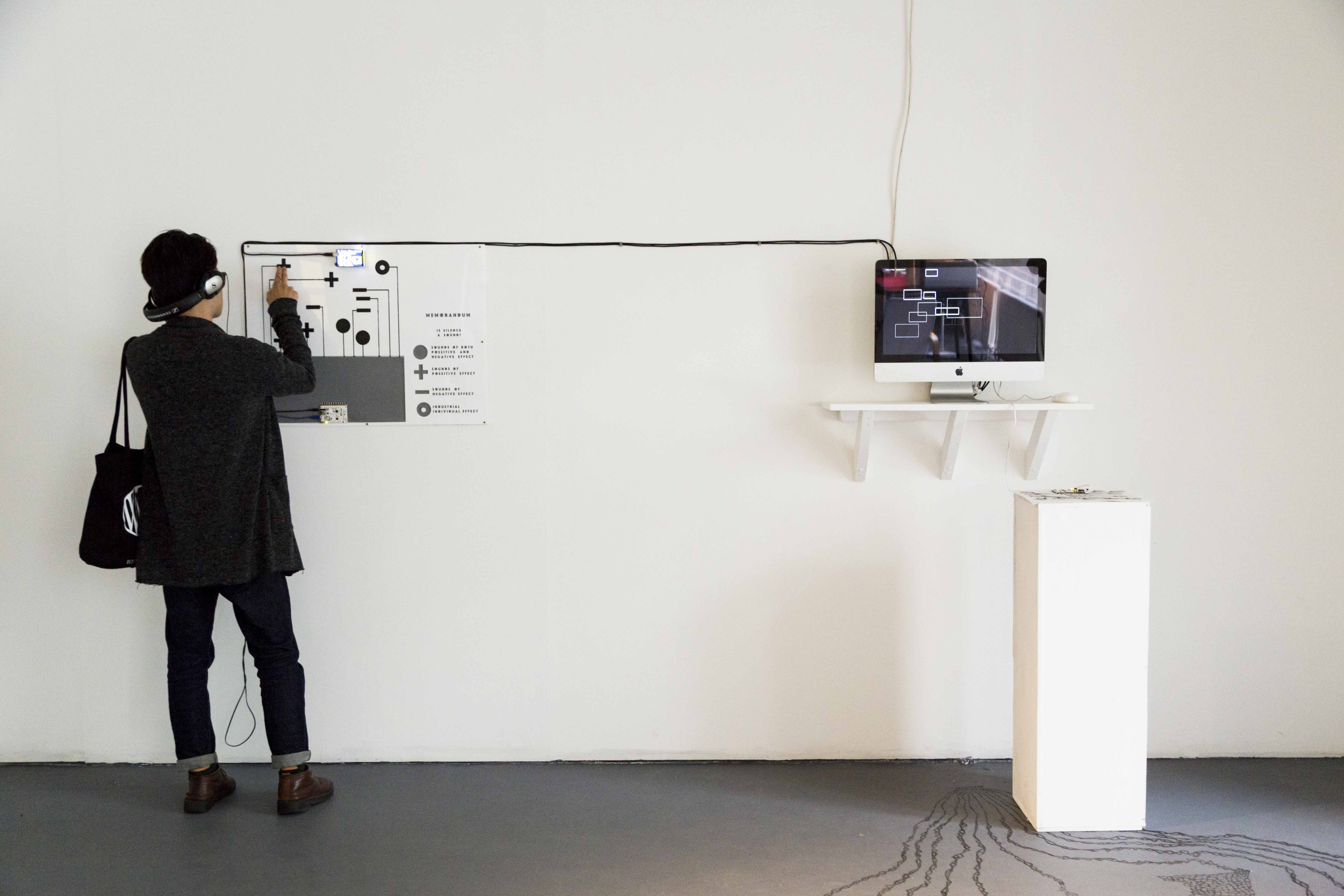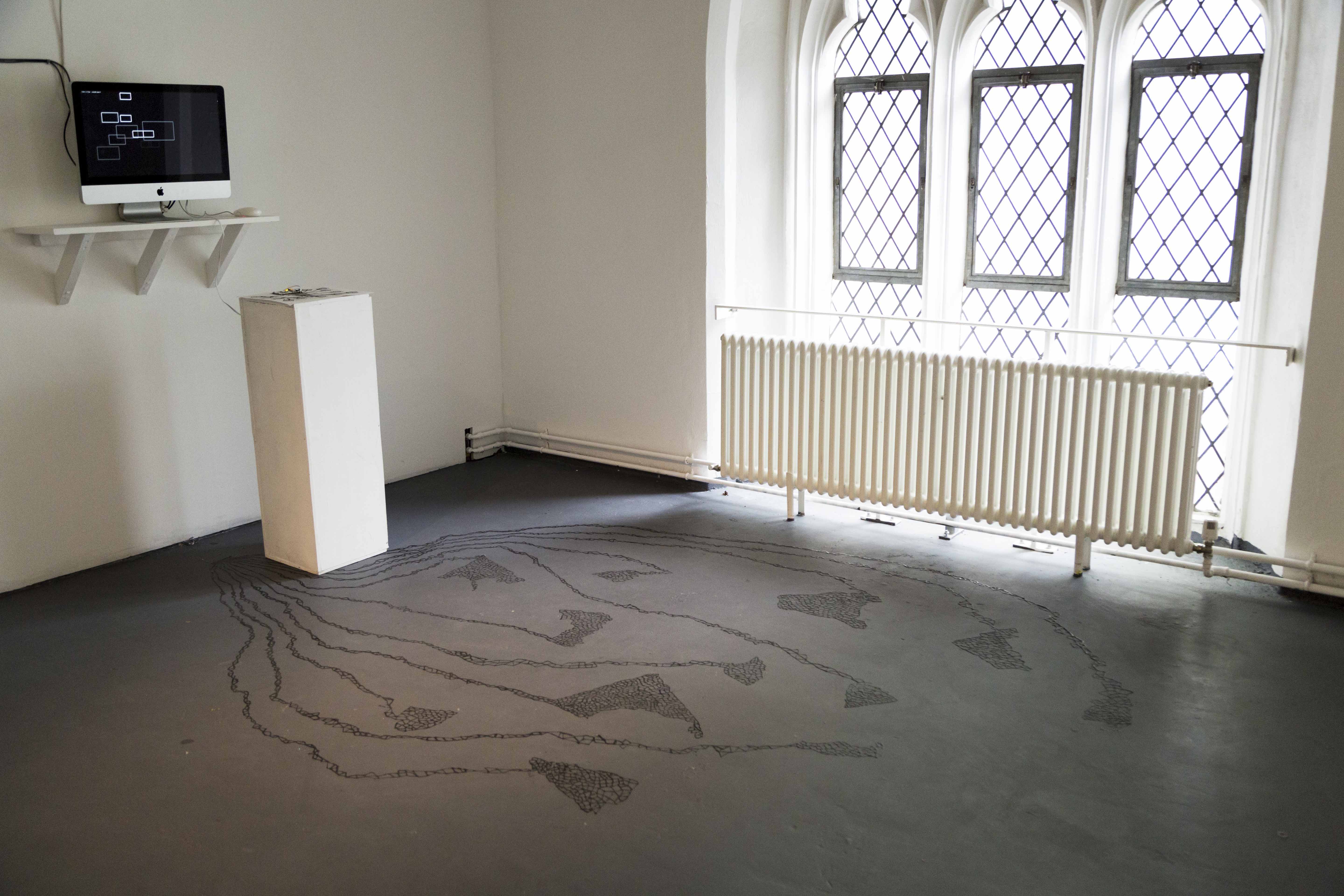Glocky
a synopsis of global and local
Glocky is an interactive installation consist of two psychographic maps of London; these maps include collections of sounds and locations of London based on the experience of people who live or have visited the city. Main aim of the piece is to create an in-between space of experience, communication and interpretation.
Eleni Alexandri
Outline
Glocky presents various elements gathered from the city of London; these elements are represented as parts of two psychographic maps. More specifically, the included elements are related to the “sense” of the city and demonstrate mainly sounds and locations. This information has been curated from responses to the distribution of a questionnaire.
Glocky draws direct influence from the concept of the archive, archival art and the situationist movement. The main objective is to create an interactive space of nonlinear narrations where the audience receives a new interpretation of London through the experience of others. The title of the piece is related to this aggregation. It is a hack of the words glocal/glocalization, and has been used to describe the new state of globalization under locality filters. However, in this piece, the word represents and symbolises an in-between point of the dipole self and Others.
Archival Concept
During the last years of my art practice, my interest focuses on the concept of the archive. An ambiguous concept includes and cares both the idea of authority and commence. Beginning my exploration by the contemporary archival collective sense and the aspects by Foucault and Derrida; the belief arose that in the future languages/communication are possibly going to be transformed into virtual or physical spaces of communication.
Here, you can find some more information from my research on the archival concept.
Archival Art
Archive, a concept behind every science as a vessel and processor of knowledge has also passed its characteristics to the arts in the last decades. Artists like Sophie Calle and Gerhard Richter helped me to understand better but also expand my interest and curiosity about it. Art has borrowed this concept to realise nonlinear self-narrative stories. However, an important stage for the fulfilment of this process is to overcome the enthusiasm of democracy and deepen on the unavoidable control that occupies it. By drawing inspiration from contemporary artists Erica Scourti and Ben Grosser and the way they managed to collect, communicate and connect the project with their audience.
Here, you can find more information on archival art and examples.
Experience of a Place - Psychogeography
The way these maps of multiple readings function, is related to the way Situationists (and Post- Situationists[1]) approached the urban environment, endorsing the view that everyday life can be art and vice versa, relegating the thought that art is directed to a wide and specific audience as well as that it can be exhibited in specific places. A significant part of the Situationist's approach concerns urban planning, which is reconstructed, according to the way an observer experiences it. The Situationists thus, through this approach, were able to construct an image of the city by using psychogeographic filters, which intensified a profound or in-depth experience and allowed a freer approach.
The expression through psychogeographic maps constitutes a new step towards the freedom of expression, highlighting at the same time the personal or subjective. Moreover, another basic characteristic of Situationism that is related to this research is the disparagement of the language -such as it is nowadays-. According to Mustafa Kayati: “It is impossible to get rid of a world without getting rid of the language that conceals and protects it, without laying bare its true nature." (situationist international online), (Godfrey (2001)[1998]:76,78)
Technical Aspect
This installation uses conductive paint with touch boards that allow the user to interact with audio-visual materials managed by OpenFrameworks(C++). More specifically, the psychogeographic map related to sounds of London uses BARE conductive touch board to activate sounds depending on of the audience touching on the piece along with Arduino Uno and Arduino screen shield which displays a lettristic composition; both of the microcontrollers are programmed on Arduino IDE. The second psychogeographic map takes signals also from a BARE conductive microcontroller programmed in Arduino IDE and passes these data into openframeworks by the help of an addon which communicates the triggering mode for visual outputs. Every Time that the audience touches a point on the board interface, a new random video is activated on the screen related to the location that represents the point.
Overall Process
Starting Point
After finalizing my idea, I started rendering under which conditions the audiovisual media of Glocky will be collected. Thus, I created a questionnaire which focuses in the general “sense” of the city and personal experiences. (see questionnaire here).At this point the way that I would use the outcome of the survey was vague. Collecting the data took two weeks. Notice that the participation was not of considerable size but I perceive that as a representation of my relationship with the people of the city.
In the period before the surveys completion, I started to think how my piece will be developed technologically. I experimented with several technologies (from GPS hardware to twitter API with javaScript) since I was interested in a wider approach of media relating not only to the physicality of the city but also on the virtual aspect of it. Since such an ambitious project was very demanding and high risk for such a short period, I decided to curate only a part of the information received by the survey and develop the other parts in the future. After I decided to work with these two aspects, favourite locations and city sounds I started to create prototypes for the interactive psychogeographic maps of Glocky.
Gathering Footage
My exploration with of the city started by visiting each one of the favourite places of people; the purpose of these visits was to get to know the places and share an experience ( as a biomatic process) but also to collect the audiovisual materials so as to translate a part of this experience to my installation.
This map summaries the results of the survey as well as audiovisual material from participants.
Final Stage
The final stage of the process was to put together the technologies and footage so as to start forming my installation. The design of the maps interface finalised and materialised. For the interface of the audio map multiple experiments on laser cutting technique were demanded, while for the design of the output of visual map I created an unorthodox plan of the city, having my residency as a reference point.(Greenwich).
Future Development and Self-Evaluation
Since the visual interactive map did not work as I wished, my main objective is to recreate this piece using different technologies, by using computer vision (software) or by changing microcontroller and hardware approach. I have not figured out yet if it was because of conductivity issues relating the floor paint reacting with my paint, or the capacity that the touch board gives is not so strong after a certain distance. Then to develop the early stage experiments that I tried for this project. Concerning the conceptual approach, I would like to broaden the input for Glocky to people that are unrelated to me. Finally, a comment on my choices is that later on, I realized that it is really hard to collect sufficient stimuli and experiences in a metropolis like London in such short period of time.
References
Art and Conceptual Research:
Chun, W.(2006)Control and Freedom. MIT Press
Derrida, J.(1996)[1995] Archive Fever. translated by Prenowitz, E., the university of Chicago Press
Foucault, M.(2008)[1969]Archaeology of Knowledge. translated by Tavistock Publication Limited, Routledge
Foster, H.(2004) An Archival Impulse Available at [accessed 27/12/2016]
Godfrey, Τ. (2001)[1998] conceptual art. translated by Orati, Ε. Kastaniotis
Karaba E. & Kouros P. (ed.)(2012) Archive Public. Performing Archives in Public Art. Τοpical Interpositions, Cube Art Editions
Liddell, H.G. (1811-1898) “An Intermediate Greek-English lexicon: formed upon the seventh edition of Liddell and Scott’s Greek”. English Lexicon
Manoff, M.(2004) Theories of the archive from across the disciplines < http://uwf.edu/dearle/capstone/manoff.pdf > [accessed 27/12/2016]
Rossaal, E .(ed.).(2010) The Archive in Motion. National Library of Norway
Walker J. (2010)[2001], Art in the age of mass media. translated by H. Papavasileiou -P. Fylaktaki, university studio press
Situationist international online: http://www.cddc.vt.edu/sionline/index.html [Accessed 2 March 2017]
Coding:
Addon, ofxTouchBoard: Available at < https://github.com/elaye/ofxTouchBoard > [Accesed 15 September 2017]
Bare Conductive and Arduino IDE - Data stream example: Available at < https://github.com/BareConductive/mpr121/tree/public/MPR121/Examples/DataStream > [Accessed 15 September 2017]
Bare Conductive and Arduino IDE: https://www.bareconductive.com/make/setting-up-arduino-with-your-touch-board/ [Accessed 15 September 2017]
SubNote:
[1] An example of this kind of approach is the project "invisible geographies" from Mongrel team of artists who created subjective maps of Bristol -web-installations (Walker,(2010)[2001]:385)
Note: The texts of additional links are excerpts of my essay on digital culture: critical theory module with the topic: “ If the archive is an image of computational sovereignty today, does it account for the organization of the market, control and aesthetic production? Illustrate your answer by drawing on one or more of these productions through specific examples.”
































































